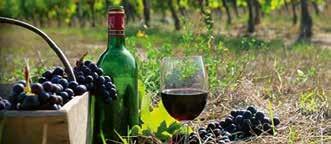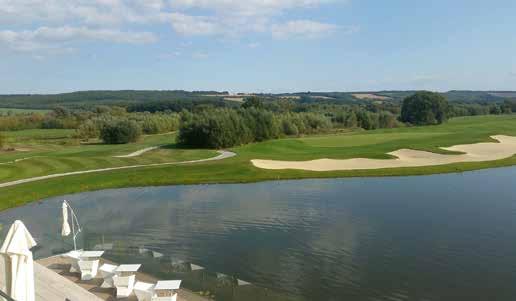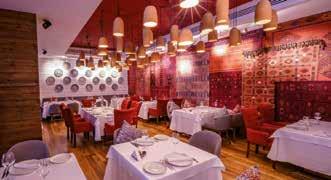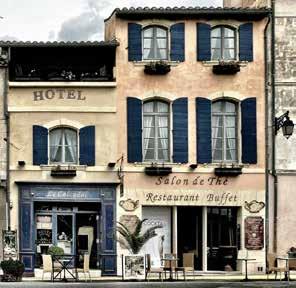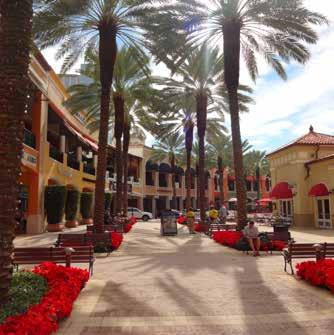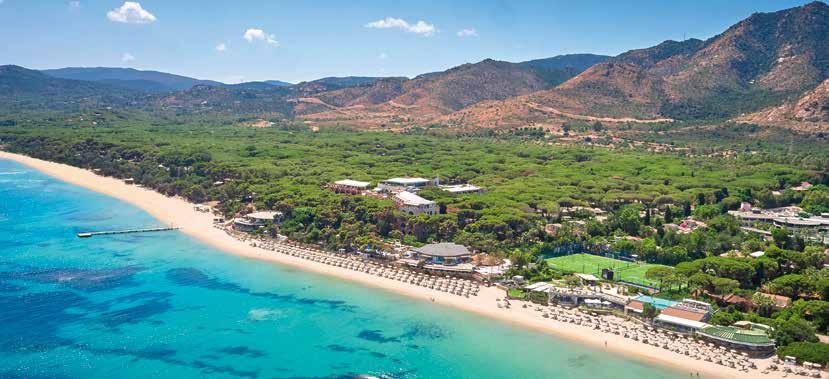
7 minute read
Golf és bor Bakuban! Golf and Wine in Baku
Golf and Wine in Baku! Golf és bor Bakuban! A kaukázusi régióban már ezer év termelnek bort! In the Caucasus region cultivating grapes millennia ago!.
https://winetours.az/book-now/
Advertisement

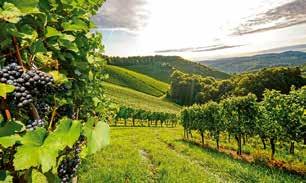

Ha szeretne golfozni, és egyben megismerkedni az azeri borokkal, akkor Bakuban jó helyen jár, mert mindkettőre módja nyílik, ha jelentkezik, s befizet az első golfés bor túrára a következő honlapon:
https://winetours.az/golf-wine-tour-baku/
A bakui szállodáktól csak 30 percnyire van kocsival a Dreamland Golf Club, amely az első és egyetlen golfpályája a fővárosnak. Cyntia Dye híres amerikai golfpályaépítő tervezte a létesítményt, amely dimbes-dombos pályaszakaszokkal, sok homokbunkerrel és csodás greenekkel került kialakításra. A pálya kihívást jelent a tapasztalt golfosoknak, de a kezdők is megtalálják itt a számítá sukat, mert széles, jól átlátható pályaszakaszok követik egymást. Mivel a golfpálya közel van a Kaszpi-tengerhez, így ebből az irányból érkező uralkodó széljárás különleges helyzeteket teremt a játékosoknak, akik márciustól decemberig élvezhetik kedvenc sportágukat. Júliusban és augusztusban kellemes estéken át lehet golfozni, míg nappal akár 35 fok meleget is mutat a hőmérő, estefelé már elviselhető az idő. A golfozás után jólesik meginni egy-egy pohár bort. A golf és bortúra keretében látogatást szerveznek egy Bakuhoz közeli borászatba, ahol bemutatják az ős azeri borkészítés technológiáját éppúgy, mint a modernet. Természetesen a híres azeri bor kóstolása sem marad el, megismertetnek többféle azeri szőlőből készült nedűt, s mellé helyi kistermelők sajtjait tálalják. Kínálja magát a kérdés: Azerbajdzsán nem muszlim ország? Hogy lehet itt borkultúra? A válasz: de igen, azonban a helyi lakosok
If you want to learn about golf and experience it at the best place to play golf in Azerbaijan and visit winery in Baku and taste local wines of the country with delicious snacks, then book now for an exclusive tour at https://winetours.az/golf-wine-tour-baku/ This is the first golf and wine tour in Azerbaijan. You will be picked up from your hotel in Baku and go to Dreamland Golf Club which is 30 minutes away from city centre. Dreamland Golf Club is Baku’s first and only golf course designed by famous American architect Cynthia Dye, from the leading architect firm Dye Designs. Tapered fairways and well-bunkered greens provide chal lenges for experienced golfers, while the level landscaping gives beginners long-range views, which assist in directing their play. Located close to the Caspian Sea, prevailing winds provide unique and varied conditions, challenging new and experienced golfers each time they step on the course. Baku enjoys a long golf season from early March until the end of December, with especially warm and light evenings in July and August when daytime temperatures reach around 35°C – refreshingly cool compared to its neighbours in the Gulf. After finishing with playing golf, you will be transferred to a winery. A trip to a winery in the outskirts of Baku offers a unique opportunity for everyone to get acquainted to winery craft, learn the culture, technology and the ancient traditions of the production of the famous Azerbaijani wines and observe the production process. During the break, guests will be able to taste the different varieties of Azerbaijani wines and cheeses.
többsége az iszlám vallás toleránsabb verzióját gyakorolja, s így megengedett az alkoholfogyasztás. Azerbajdzsán szekuláris, multikulturális ország, a kaukázusi népek szenvedélyességével, büszkeségével, olyan hely, ahol a szőlőművelés komoly hagyományokkal rendelkezik. Sok család készít magának otthon bort, főként Ivanovka faluban vagy a Gazakh régióban,de az azeri borteremelés nagyját hatalmas szőlőbirtokokkal rendelkező pincészetek adják, amelyekben egyedi, ötletes házasításokkal fantasztikus nedűk készülnek. Ezer évvel ezelőtt, amikor még a kaukázusi régió nem volt országokra felosztva, már szőlőtermesztéssel és borkészítéssel foglalkoztak az itt élő népek, ami a történelem során soha nem változott meg. 1920-ban, Azerbajdzsánt a rövid függetlensége után, bekebelezték az oroszok, a Szovjetunió részévé vált, de a szőlőtermesztés és a borászat továbbra is virágzott. Egyre csak nőtt, főleg a hetvenes években. 1976-ban egy speciális intézményt hoztak létre Azerbajdzsánban, ahol szovjet akadémikusok kísérleteztek ki újfajta szőlőklónokat, így aztán az azeri szőlőterületek híresekké váltak a sokféleségükről, a jobbnál jobb érdekes ízvilágú boraikról. Az 1984-es szüret jelentette a csúcsot, ekkor 2 millió tonna szőlőt szedtek Azerbajdzsánban, itt termett az egész Szovjetunió termésének a 30%-a. A szőlő levéből nagy mennyiségű félédes pezsgő készült. Sajnos egy esztendővel később minden a feje tetejére állt, s megváltozott, mert Mihail Gorbacsov vette át a Szovjetunióban az uralmat, aki antialkoholista volt, s elrendelte, hogy ki kell vágni a szőlőbirtokok nagy részét Azerbajdzsánban. A 80-as évek végére így katasztrófálissá vált a helyzet, gyakorlatilag az azeri borászkodás megszűnt. Azerbajdzsán 1991-ben vált független köztársasággá, de a gazdaság, s a politikai helyzet még jó ideig sújtotta a szőlő- és bortermelést. Gyakorlatilag 2002-ben kezdték el újra telepíteni a szőlőket, s ekkor már a minőséget tartották szem előtt, nem a mennyiséget. Olaszországból és Moldovából érkezett sok segítség a borászatok helyreállítása érdekében. Francia, olasz és német technológiát telepitettek a pincészetekben. A helyi szőlőfajták mellett importálták, s elkezdték meghonosítani a nemzetközi szőlőfajtákat, vagyis igen izgalmas periodus vette kezdetét. A Merlot, a Pinot Noir, a Cabernet Sauvignon, a Chardonnay, a Viognier és a Pinot Blanc is felkerült a palettára, míg a helyi fajták közül a Superavi, a Madrasa, a Tavkveri (vörös) és a Bayonshira,
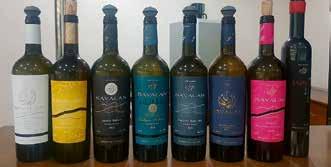
a Mtzvani, valamint a Misqali (fehér) kapott elsősorban figyelmet. Ma már a történelmi kuriózumok mellett modern szuper azeri borokat kínálnak a turistáknak. A csúcsot a Savalan pincészet borai jelentik. (savalan.az) Ez a borászat Bakutól 3 órányi autóútra van, de mégis megéri ellátogatni ide, mert magas minőséggel találkozhat a turista. A hordós érlelő pince, a feldolgozó üzem, s a kóstolóterem egyaránt első osztályú.
L.Kelemen Gábor
You might ask, isn’t Azerbaijan a Muslim country? Well yes, the majority of Azerbaijanis practice a low key form of tolerant Islam. But this is a secular, multi-cultural country, a place of passionate Caucasian spirit, and one of the cradles of world viticulture. While some families do make their own wines, most of Azerbaijan’s production comes from larger companies with access to a wide variety of vineyards allowing the conditions for a wide variety of grape types to be grown and in turn facilitating some imaginative blending. Millennia ago, people living here were cultivating grapes. And pretty soon they hit on the sterling idea of crushing them to make wine. One of Noah’s first impulses after surviving the flood was to plant a vineyard. In 1920, after a brief period of independence, Azerbaijan was
re-conquered by Russia and became part of the USSR, but the love of good wine continued. Wineries were nationalised but wine production increased considerably especially from the 1970s. In 1976 Azerbaijan founded an institute of winemaking, and Soviet academics worked on breeding new grape varieties to make the most of Azerbaijan’s very varied terrain. Harvests peaked in 1984 when Azerbaijan’s grape crop topped 2,000,000 tons, around 30% of the whole USSR total, albeit much of that being used to make semi-sweet sparkling wines of less than sparkling quality. The next year, everything changed with the rise to power of Mikail Gorbachev, his anti-alcohol drive which resulted in the rooting out of a huge proportion of Azerbaijan’s grape vines during the 1980s. The results were disastrous for wine-making. The economic and political dislocations following independence in 1991, added further woes and for two decades the industry languished with minimal investment. However, following a series of government initiatives starting in 2002, wide scale replanting has been accelerating with a greater emphasis on quality rather than quantity. Wineries essentially started all over again helped by expert winemakers from Italy, Moldova and elsewhere. Reconstruction of processing facilities has generally been achieved by importing top quality French, German and Italian technologies. The introduction of popular internationally recognised grape varieties has also helped in crafting wines with global export appeal while the cultivation of lesser known local grape types offers the chance to experiment with more adventurous, niche wines. Azerbaijan’s wineries make extensive use of well-known grape varieties including Merlot, Pinot Noir and Cabernet Sauvignon, Chardonnay, Viognier, and Pinot Blanc. But there are also several important Pan-Caucasian and local varietals. For now, many of those are little more than historical curiosities, though there is a new drive to revive some old strains. It’s well worth familiarizing yourself with the following varieties which are used in Azerbaijani wines: Superavi, Madrasa, Tavkveri (red) and Bayonshira, Mtzvani, Misqali (white). Nowadays the tourist can drink beside the historical wines modern, super wines: the top winery in Azerbaijan is Savalan.(savalan.az). This winery is worth to visit. The cellar with the oak barrels, the modern process of wine making, the tasting room – all first class.
Gabor L. Kelemen
